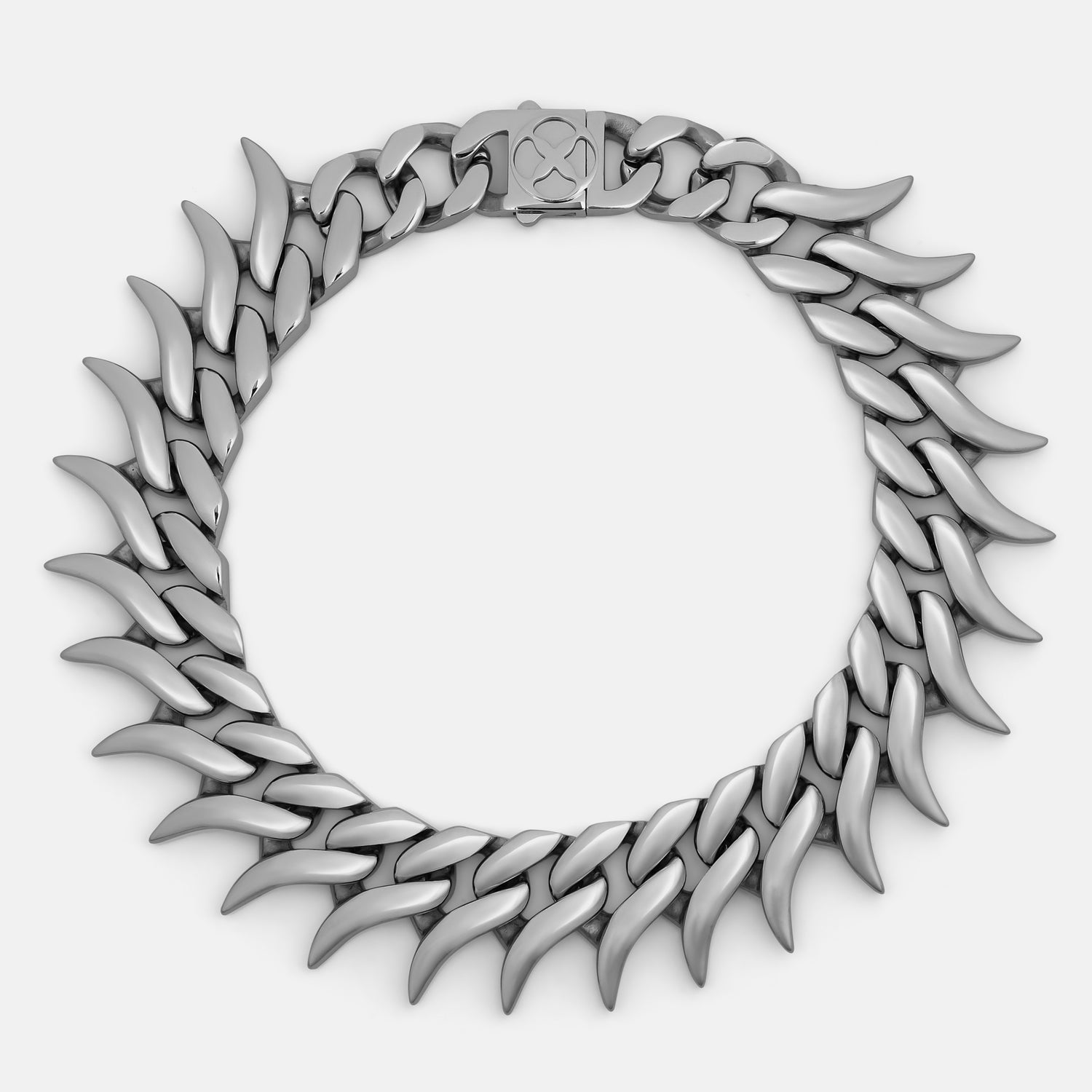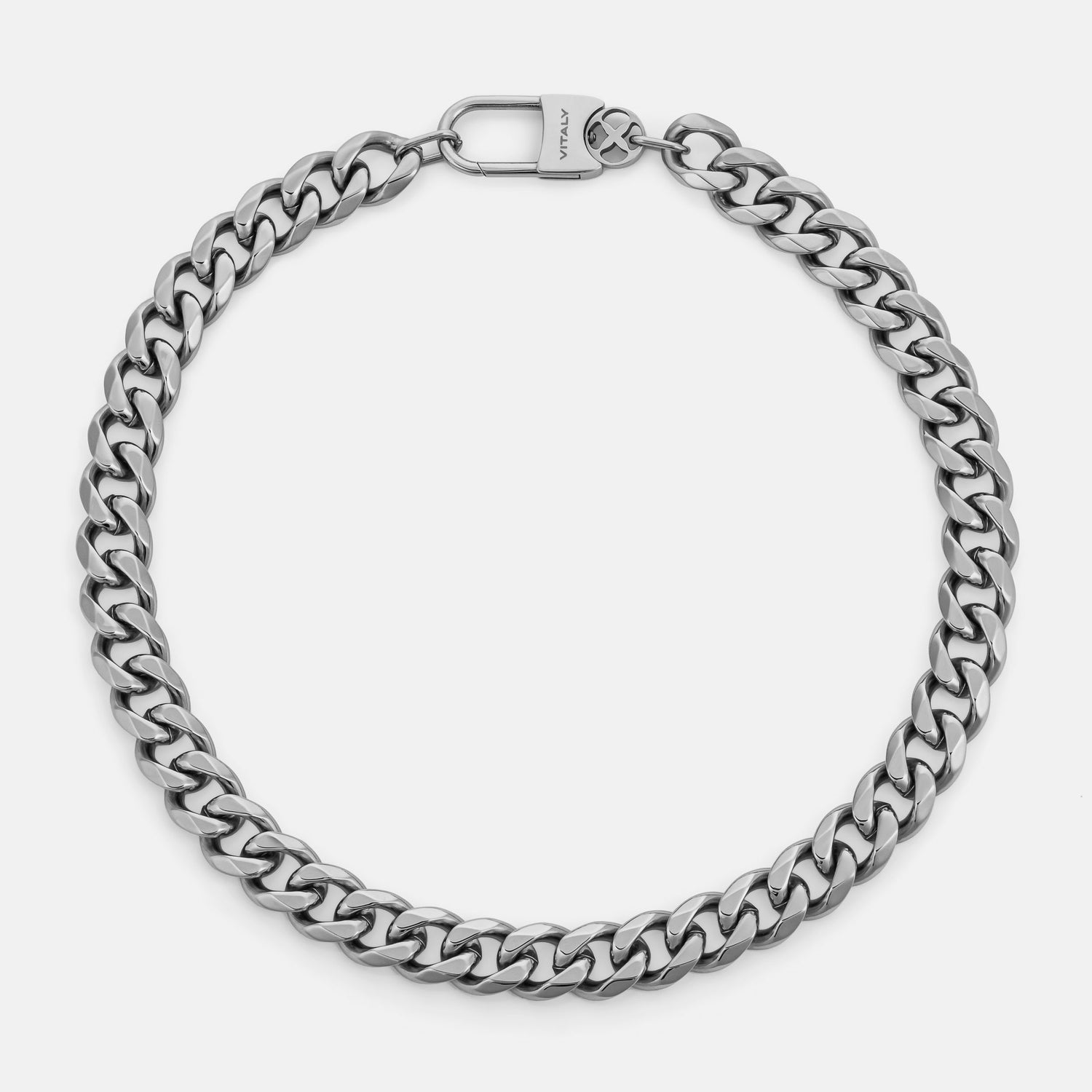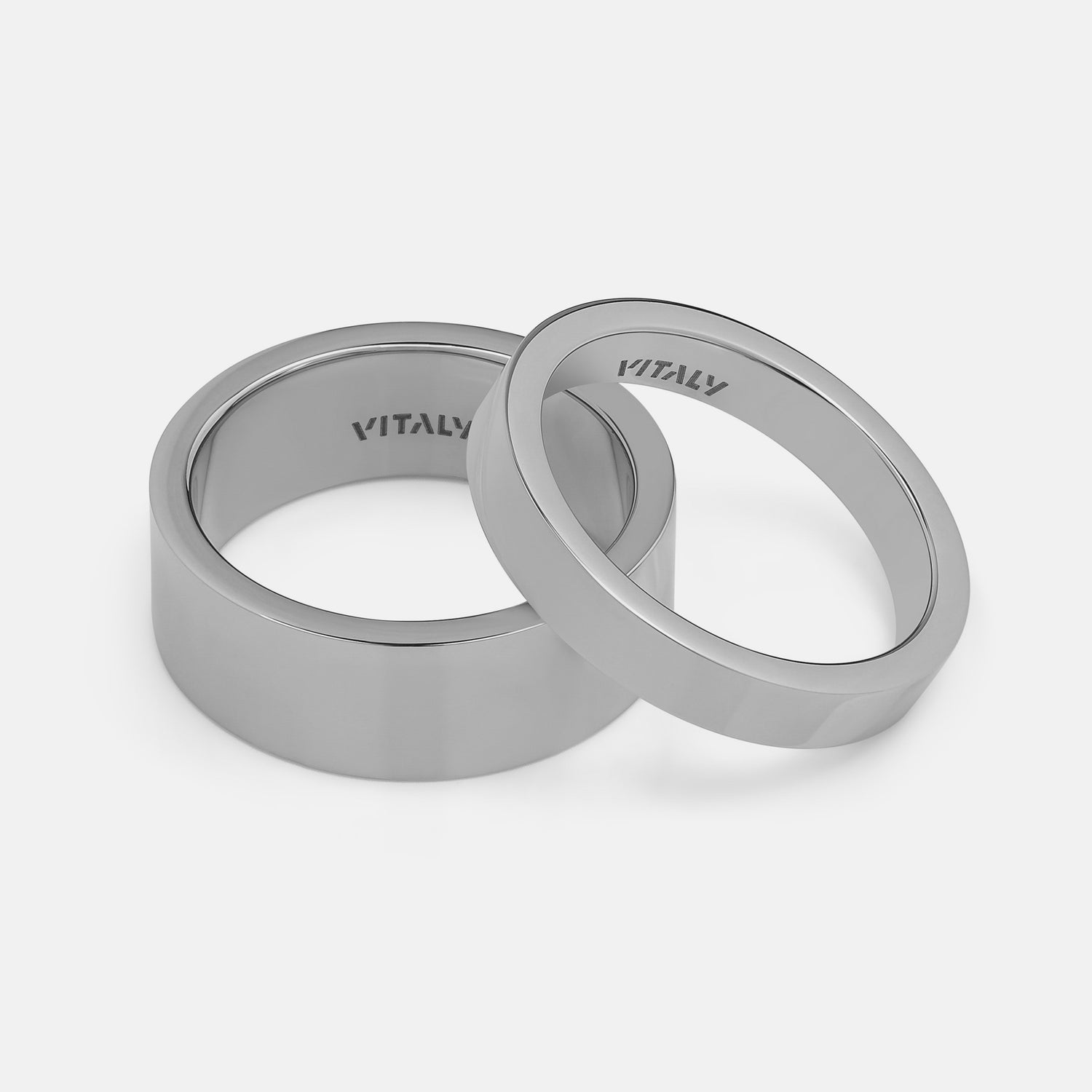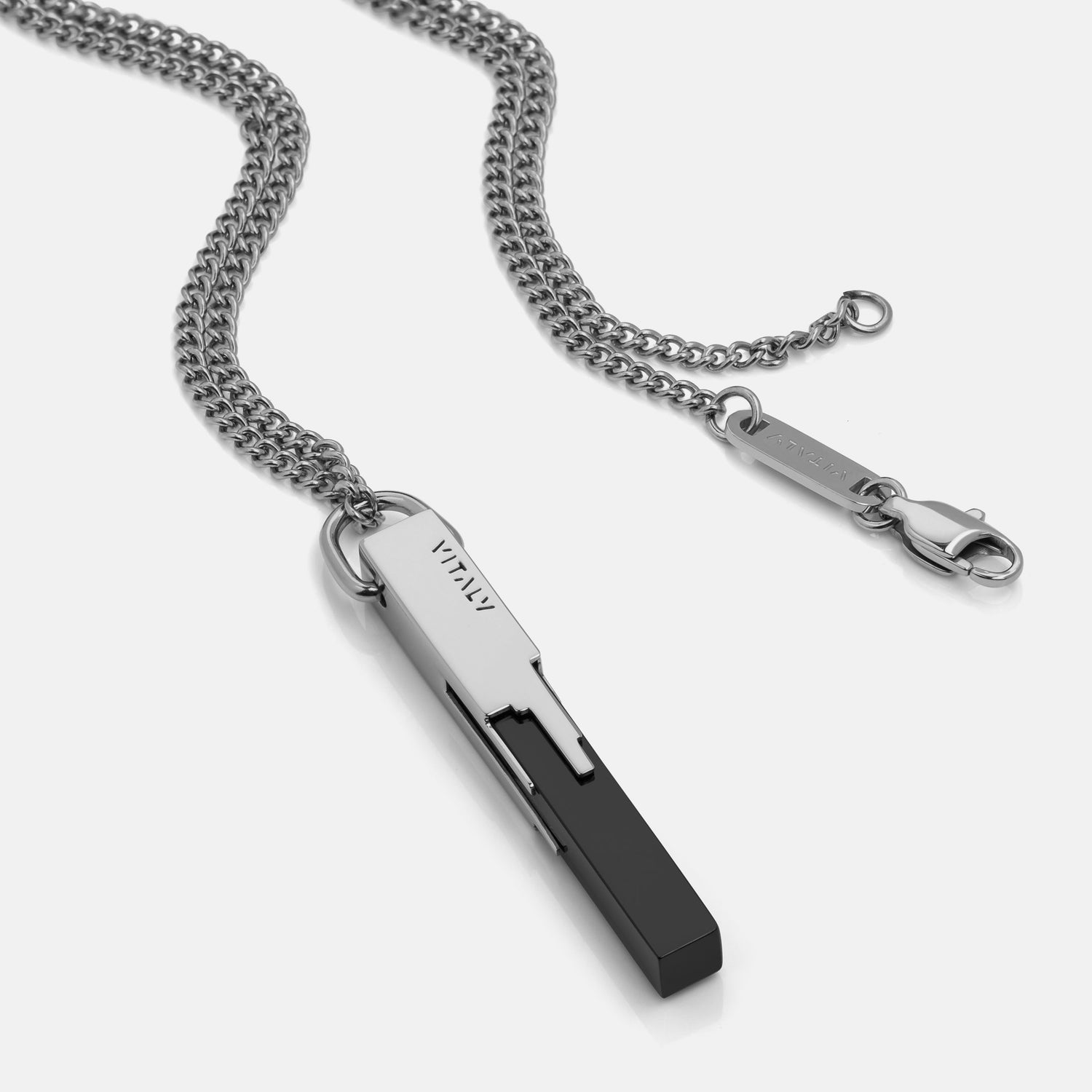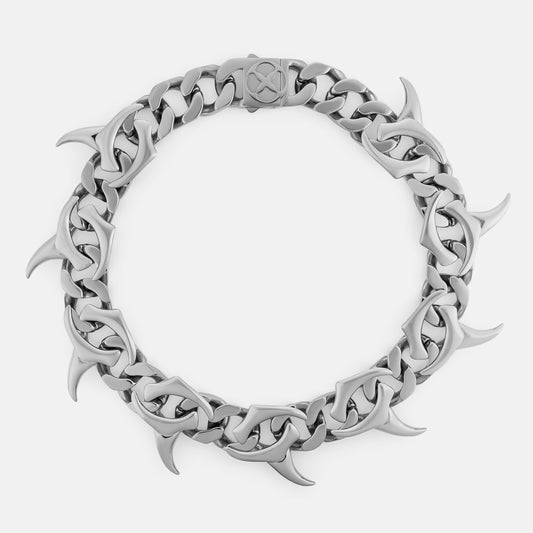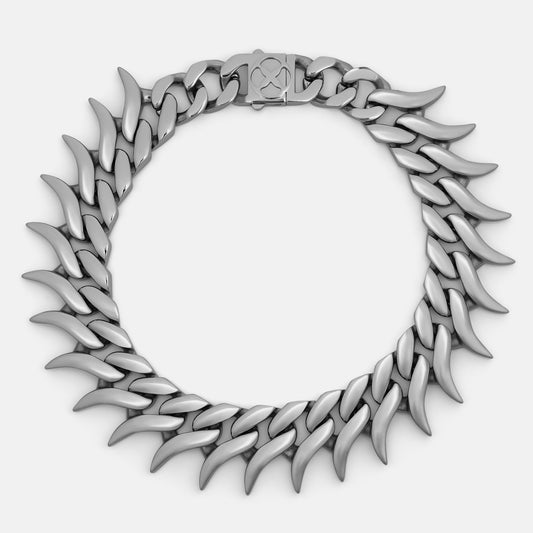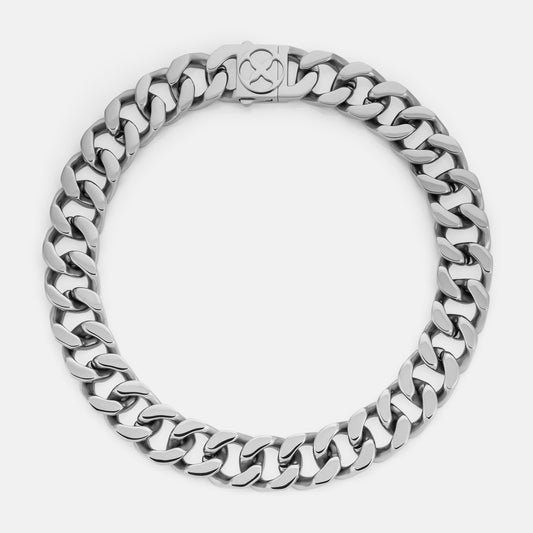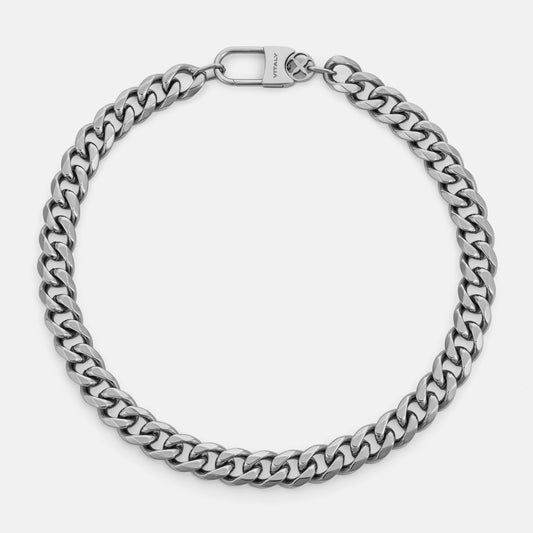You’ve invested in bold, skin-friendly jewelry that looks incredible—but here’s the real test: Will it stay that way? Tarnish is a nuisance yes, but it's also a chemical transformation that alters the look of your favorite pieces.
If you’re wondering, “Does hypoallergenic jewelry tarnish?”, you’re asking the right questions. Dive deeper into what tarnishing really means, the challenges some metals face, and the intentional design behind hypoallergenic jewelry that triumphs over daily wear.

What Causes Jewelry to Tarnish?
Tarnishing happens when your jewelry reacts with the air, moisture, or chemicals around you. It’s not a matter of if; it’s a matter of how fast, depending on what you’re wearing and where you’re living.
Here are some of the causes of tarnished jewelry:
- Exposure to moisture: Sweat, humidity, water—basically everything summer throws at you.
- Contact with chemicals: Sunscreens, perfumes, lotions, even the soap in your shower can trigger reactions. Other chemicals, like hydrogen sulfide, can also cause tarnishing.1
- Environmental air: Pollutants and oxygen itself gradually react with certain metals, especially when left untreated.
The Role of Metals in Tarnishing
Metals like copper and lower-grade silver are notorious for tarnishing because they easily react with oxygen and sulfur in the air. If left unchecked, that beautiful shine turns dull, then green, then darker.

Sterling silver (92.5% silver mixed with alloys) is slightly better, but still vulnerable over time without proper care.2 Even plated items, those covered with a thin layer of gold or rhodium, can tarnish once the outer coating wears down.
Does Nickel Contribute to Tarnishing?
Absolutely. Nickel doesn’t just cause allergic reactions—it’s unstable when exposed to the elements. Nickel-containing jewelry tends to tarnish faster and corrode, especially when mixed with moisture.
That’s why nickel-free jewelry isn't just better for your skin—it's also more durable and less likely to lose its luster.
Does Hypoallergenic Jewelry Tarnish?
So, what is hypoallergenic jewelry?
Hypoallergenic jewelry is built to resist tarnishing much better than traditional alloys. However, not all hypoallergenic metals behave the same way.
Hypoallergenic Materials and Their Tarnish Resistance
Different metals bring different strengths to the table when it comes to fighting off tarnish. If you want jewelry that stays sharp without high-maintenance care, here’s how the most popular hypoallergenic metals stack up.
- Stainless steel: Extremely resistant to tarnish, corrosion, and daily wear. It doesn’t react with air or water like copper does, making it a top-tier choice for everyday wear.
- Titanium: Another power player. It’s lightweight, durable, and practically impervious to tarnish, even with heavy body sweat or beach days.
- Gold: Pure gold (24k) doesn't tarnish easily. However, lower karat blends (14k, 18k) may have alloys that slightly react over time. Choosing higher karat gold lowers the risk.3
- Platinum: Dense, heavy, and naturally non-reactive. It holds its bright white sheen longer than almost any other metal.
High-quality hypoallergenic jewelry, such as nickel—free stainless steel and platinum, is designed to stay sharp without constant polishing.
Hypoallergenic Jewelry That Doesn’t Tarnish at Vitaly Design

If you’re looking for hypoallergenic jewelry that’s as tough as it is stylish, Vitaly has you covered. Every piece is built from nickel-free stainless steel, meaning it's skin-safe, sweat-resistant, and ready for the daily grind.
Here’s what you’ll find:
- Stainless Steel Rings: Our stainless steel rings marry striking design with industrial strength. Whether you're stacking minimalist bands or opting for a bold statement ring, our pieces deliver on aestheticism, without ever irritating sensitive skin Plus, they’re engineered to resist tarnish and corrosion, even under heavy wear.
- Stainless Steel Chains: Layer them, stack them, or let a single piece carry the whole look. Our stainless steel chains are lightweight, bold, and made to hold their color and shine through sweat, water, and all-night movement.
- Stainless Steel Bracelets: Our stainless steel bracelets are designed for versatility and durability. Built with hypoallergenic metals and crafted to resist tarnishing, they offer a seamless fit that won't irritate even the most sensitive skin. Wear them solo for a minimal look or stack them up to for added depth and texture to your look.
Vitaly’s hypoallergenic jewelry collection is built for real life: bold enough to lead, tough enough to last, and smart enough to protect your skin. That’s future-proof design.
How to Care for Hypoallergenic Jewelry to Prevent Tarnishing
Even the most resilient materials appreciate a little. Here's how to protect your hypoallergenic jewelry and keep it sharp:
- Routine Cleaning: After a long day, wipe your jewelry with a soft, clean cloth to remove oils and moisture.
- Deep Clean: Every few weeks, soak pieces in lukewarm water with a drop of mild soap. Rinse thoroughly and pat dry, and avoid aggressive scrubbing.
- Separate Storage: Store your earrings, rings, and necklaces in individual pouches or lined compartments. It prevents micro-scratches and keeps your pieces looking new.
- Avoid Chemical Contact: Even with hypoallergenic metals, avoid spraying perfume, sunscreen, or hairspray directly onto your jewelry. Apply first, wear jewelry second.
Keeping these habits locked in will keep your jewelry in condition—no green marks, no weird textures, no unexpected tarnish.
Is Hypoallergenic Jewelry the Best Choice for Tarnish-Free Wear?
Elevate your collection if you'd like to avoid unexpected skin reactions or watching your cherished pieces lose their vibrance.
Hypoallergenic jewelry, especially built with stainless steel, platinum, titanium, or higher karat gold, offers durability, skin safety,. Plus, when you choose Vitaly’s collection of nickel-free jewelry, you’re choosing quality, resilience, and future-focused design that better fits your lifestyle and your skin.
So whether you're stacking up hypoallergenic earrings or locking down your signature chain, you can do it knowing your pieces are engineered to last and made to look even better over time.
Sources:
Research Gate.Tarnished jewellery and skin – a subtle external marker indicating exposure to hydrogen sulphide https://www.researchgate.net/publication/382331066_Tarnished_jewellery_and_skin_-_a_subtle_external_marker_indicating_exposure_to_hydrogen_sulfide
Brittanica. The metal and its alloys. https://www.britannica.com/technology/silver-processing/The-metal-and-its-alloys
My Jewelry Repair. A Guide to Gold Karats. https://myjewelryrepair.com/2025/02/gold-karat-guide/


